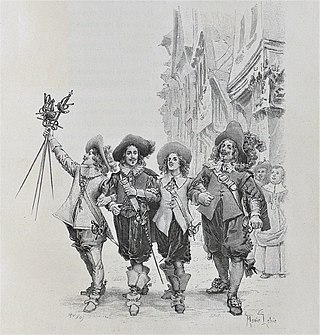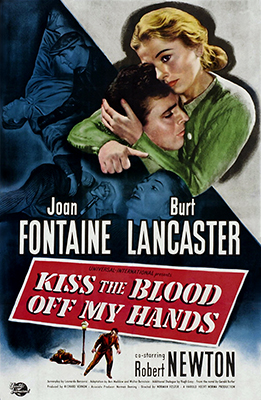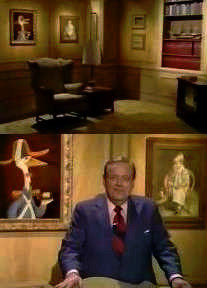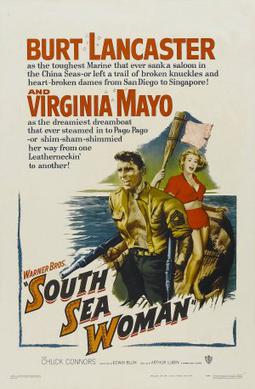
Burton Stephen Lancaster was an American actor and film producer. Initially known for playing tough guys with a tender heart, he went on to achieve success with more complex and challenging roles over a 45-year career in films and television series. He was a four-time nominee for the Academy Award for Best Actor, and he also won two BAFTA Awards and one Golden Globe Award for Best Lead Actor. The American Film Institute ranks Lancaster as #19 of the greatest male stars of classic Hollywood cinema.

Robert Siodmak was a German film director who also worked in the United States. He is best remembered as a thriller specialist and for a series of films noir he made in the 1940s, such as The Killers (1946).
Crimson is a rich, deep red color, inclining to purple. It originally meant the color of the kermes dye produced from a scale insect, Kermes vermilio, but the name is now sometimes also used as a generic term for slightly bluish-red colors that are between red and rose. It is the national color of Nepal.

A swashbuckler is a genre of European adventure literature that focuses on a heroic protagonist stock character who is skilled in swordsmanship, acrobatics, and guile, and possesses chivalrous ideals. A "swashbuckler" protagonist is heroic, daring, and idealistic: he rescues damsels in distress, protects the downtrodden, and uses duels to defend his honor or that of a lady or to avenge a comrade.

His Majesty O'Keefe is a 1954 American adventure film directed by Byron Haskin and starring Burt Lancaster. The cast also included Joan Rice, André Morell, Abraham Sofaer, Archie Savage, and Benson Fong. The screenplay by Borden Chase and James Hill was based on the novel of the same name by Laurence Klingman and Gerald Green (1952).

Captain Horatio Hornblower is a 1951 British naval swashbuckling war film in Technicolor from Warner Bros., produced by Gerry Mitchell, directed by Raoul Walsh, that stars Gregory Peck, Virginia Mayo, Robert Beatty and Terence Morgan.

Debra Paget is an American retired actress and entertainer. She is perhaps best known for her performances in Cecil B. DeMille's epic The Ten Commandments (1956) and in Elvis Presley's film debut, Love Me Tender (1956), as well as for the risqué snake dance scene in The Indian Tomb (1959).

Nicholas Cuccia, better known by his stage name Nick Cravat, was an American actor and stunt performer.
Harold Adolphe Hecht was an American film producer, dance director and talent agent. He was also, though less noted for, a literary agent, a theatrical producer, a theatre director and a Broadway actor. He was a member of the Academy of Motion Pictures Arts and Sciences and the Screen Producers Guild.

Kiss the Blood Off My Hands is a 1948 American noir-thriller film directed by Norman Foster. Based on the best-selling novel of the same name by Gerald Butler, it stars Joan Fontaine, Burt Lancaster, and Robert Newton. The film faced minor opposition from fundamentalist groups in the United States and the Commonwealth, with regard to its gory title. In some markets, the film was released under the alternate titles The Unafraid or Blood on My Hands.

Éva Márta Szőke Ivanovics, known professionally as Eva Bartok, was a Hungarian-British actress. She began acting in films in 1950, and her last credited appearance was in 1966. She acted in more than 40 American, British, German, Hungarian, French, and Israeli films. She is best known for appearances in Blood and Black Lace, The Crimson Pirate, Operation Amsterdam, and Ten Thousand Bedrooms.

Torin Herbert Erskine Thatcher was a British actor who was noted for his flashy portrayals of screen villains.

Against All Flags is a 1952 American pirate film directed by George Sherman, with uncredited assist from Douglas Sirk. It features Errol Flynn as Lt. Brian Hawke, Maureen O'Hara as Prudence "Spitfire" Stevens, and Anthony Quinn as Roc Brasiliano. The film is set in 1700, on the coast of Madagascar.

Swashbuckler films are a subgenre of the action film genre, characterised by swordfighting and adventurous heroic characters, known as swashbucklers. While morality is typically clear-cut, heroes and villains alike often follow a code of honour. Some swashbuckler films have romantic elements, most frequently a damsel in distress. Both real and fictional historical events often feature prominently in the plot.

Family Classics is a Chicago television series which began in 1962 when Frazier Thomas was added to another program at WGN-TV. Thomas not only hosted classic films, but also selected the titles and personally edited them to remove those scenes which he thought were not fit for family viewing. After Thomas' death in 1985, Roy Leonard took over the program. The series continued sporadically until its initial cancellation in 2000.

Franca Marzi was an Italian film actress. She appeared in 80 films between 1943 and 1977.

South Sea Woman is a 1953 American black-and-white action-comedy-drama film starring Burt Lancaster, Virginia Mayo and Chuck Connors, and directed by Arthur Lubin. It was based on the play General Court Martial by William M. Rankin with the working title being Sulu Sea. The picture was written by Edwin Blum.
Roland Kibbee was an award-winning American screenwriter and producer. He was a frequent collaborator and friend of actor-producer Burt Lancaster.

Leslie Ernest Bradley was an English actor. He died in Desert Hot Springs, California.
Hecht-Hill-Lancaster was a production company formed by the actor Burt Lancaster in association with his agent, Harold Hecht, and James Hill. In 1948 Lancaster and Hecht formed Norma Productions, which later became Hecht-Lancaster. Hill joined in the mid-1950s. The company produced some of the most notable American films of the 1950s.
















